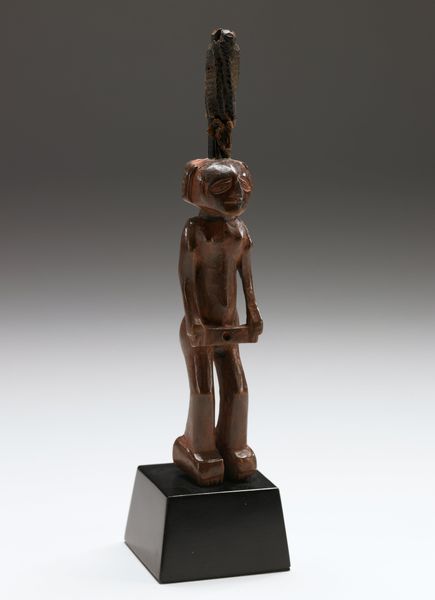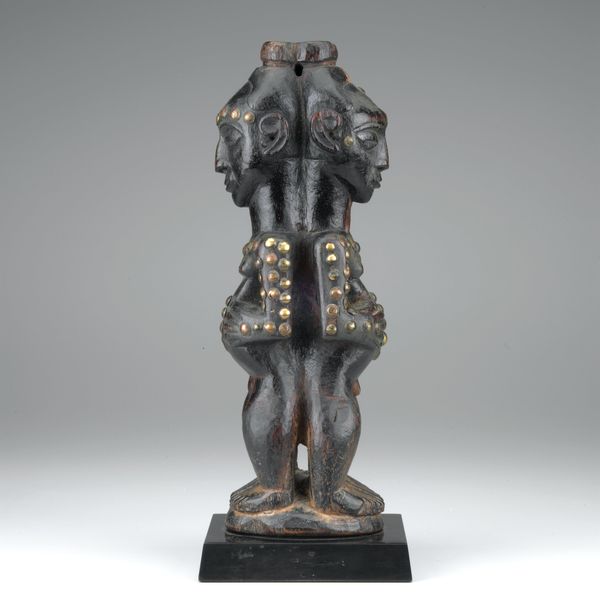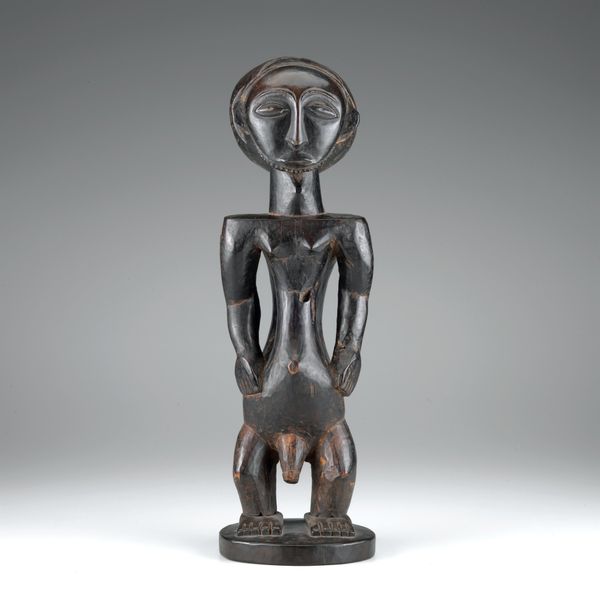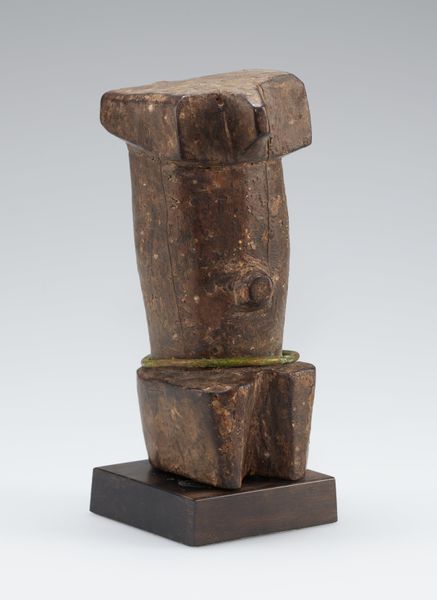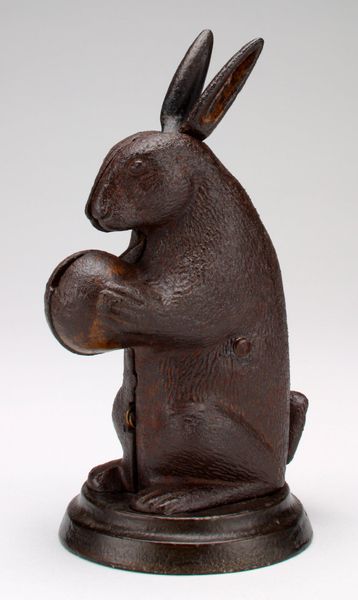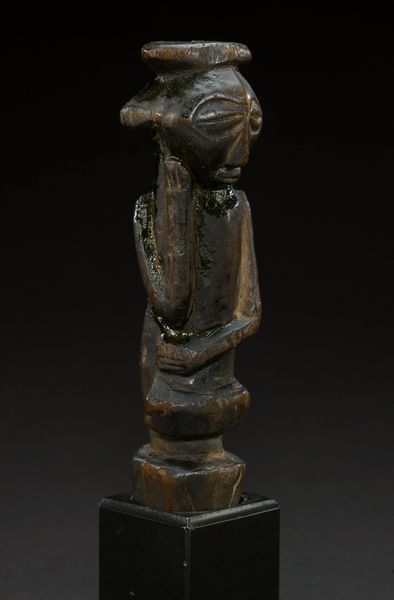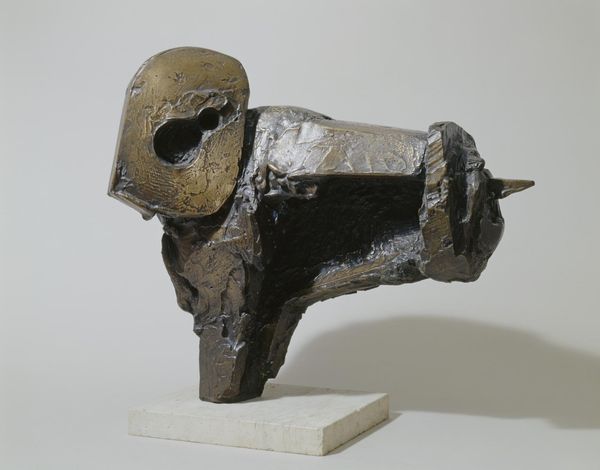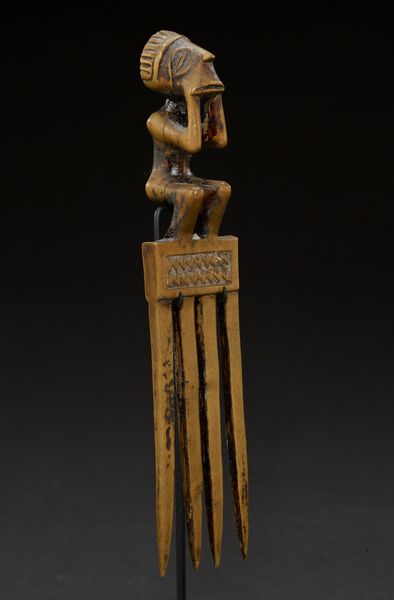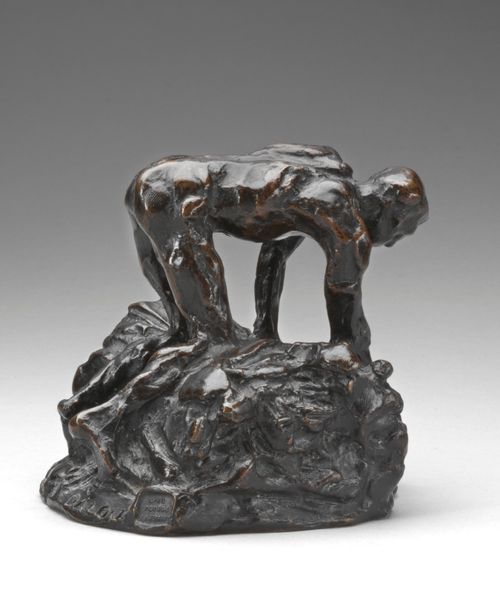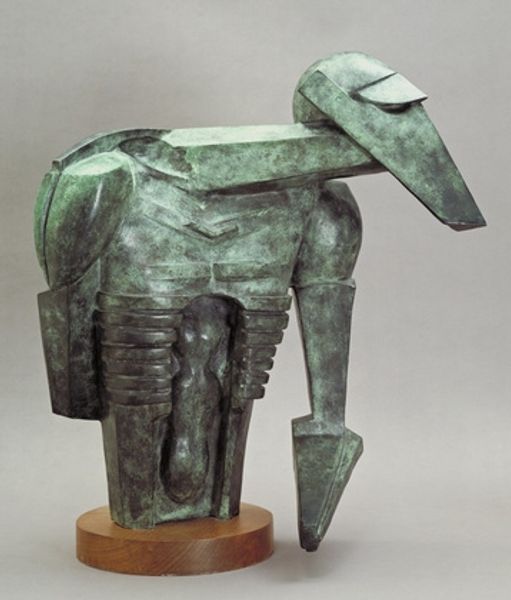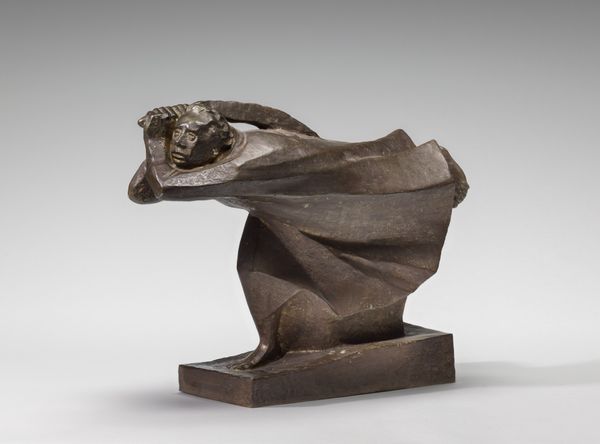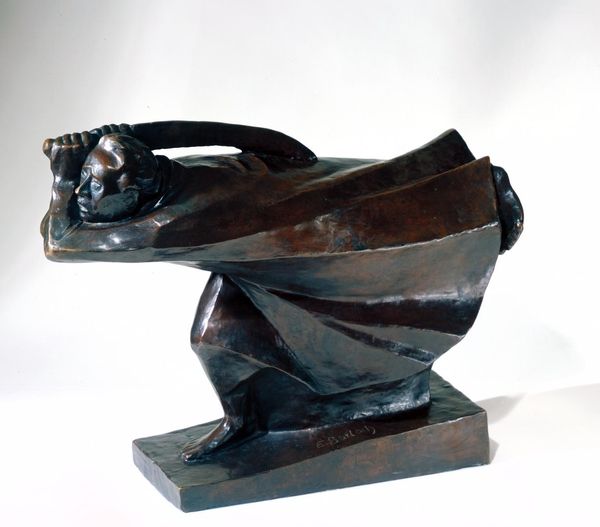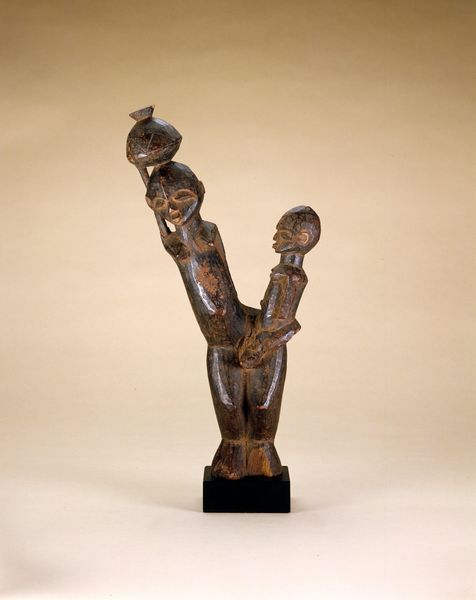
sculpture, wood
#
portrait
#
figuration
#
sculpture
#
wood
Dimensions: 7 3/8 x 3 1/4 x 3 in. (18.7 x 8.3 x 7.6 cm) (without base)
Copyright: Public Domain
Editor: This striking sculpture, titled "Heddle Pulley," is from the Baule people, dating around the 20th century. Carved from wood, it features a human head atop a functional weaving tool. The face seems serene, but the tool grounds it in daily life. What can you tell me about its context? Curator: This seemingly simple tool holds profound cultural significance. Beyond its practical function in weaving, the "Heddle Pulley" reflects the interwoven roles of gender, labor, and spiritual beliefs within Baule society. Consider that weaving, primarily women's work, is vital to economic stability. Editor: So, the pulley is more than just a tool? Curator: Absolutely. The sculpted head, a portrait possibly representing an ancestor or spirit, elevates the mundane to the sacred. This imbues the act of weaving with ancestral blessings, linking the weaver to a broader lineage. How does this connection resonate with you? Editor: It makes me think about how labor is often invisibilized. This gives visibility and reverence to weaving, specifically performed by women. Curator: Precisely. And within the context of colonialism and economic exploitation, recognizing the value and skill inherent in indigenous craftsmanship becomes a powerful act of resistance. Do you think understanding the artist’s intention, or cultural intention, enhances our understanding? Editor: Definitely. I had initially just appreciated it aesthetically, but now, learning about the historical and cultural background, it adds layers of depth and complexity that are hard to ignore. Curator: Indeed. Appreciating art involves continuous learning. This process can deepen our understanding of artistic cultural heritage. Editor: Agreed, it has changed my initial reading of the object.
Comments
minneapolisinstituteofart almost 2 years ago
⋮
Baule men weave on looms that utilize heddle pulleys to produce intricate textiles. Weavers often had their heddle pulleys decorated with fine, small scale carvings of animal or human heads and figures. The carvings have no ritual or sacred meaning. They are meant to be admired for their beauty and to attract attention to the loom and the weaver who usually works out of doors among the people of the village.
Join the conversation
Join millions of artists and users on Artera today and experience the ultimate creative platform.
